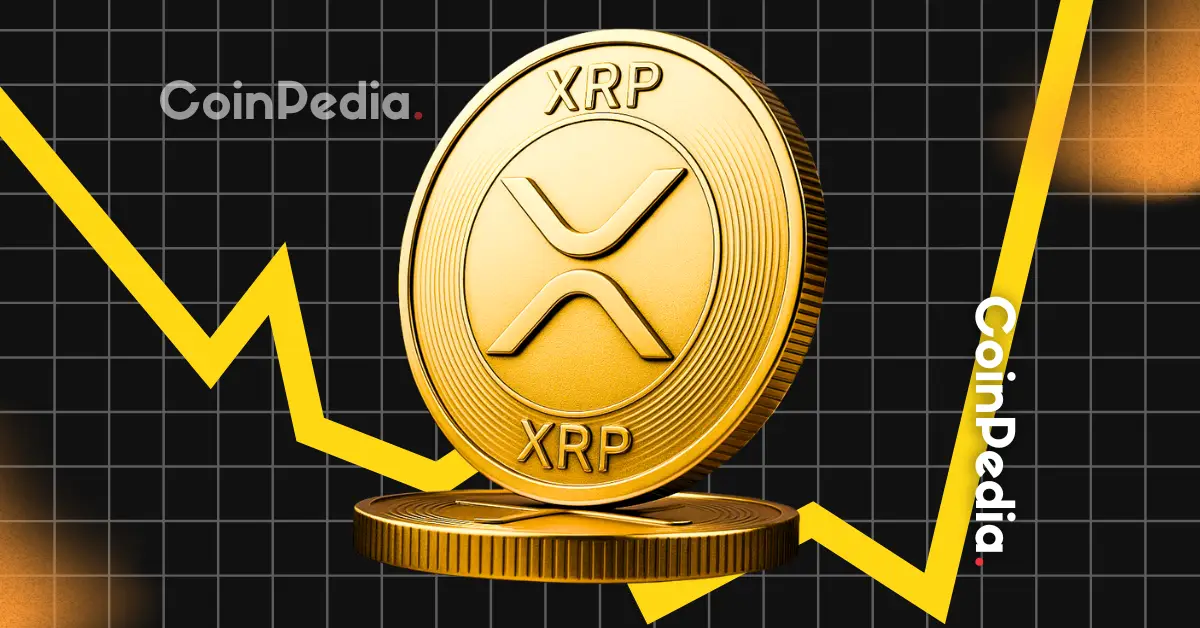The Potential of XRP as a Global Reserve Bridge Currency
The Evolution of Global Finance and the Need for a Bridge Currency
The global financial landscape is undergoing a profound transformation. The U.S. dollar, which has long been the world’s dominant reserve currency, is facing increasing scrutiny and competition. Emerging markets, geopolitical shifts, and technological advancements are reshaping the way international transactions are conducted. In this evolving environment, the concept of a “bridge currency” has gained traction. A bridge currency serves as an intermediary in cross-border transactions, facilitating smoother and more efficient exchanges between different currencies. This is where XRP, the digital asset associated with Ripple, enters the conversation. With its unique design and capabilities, XRP is being considered as a potential candidate for this role. However, the path to becoming a global reserve bridge currency is fraught with challenges and uncertainties.
Understanding XRP: A Digital Asset Designed for Cross-Border Payments
XRP is not just another cryptocurrency. Unlike Bitcoin, which was created as a decentralized store of value, XRP was specifically designed to address the inefficiencies of traditional cross-border payment systems. The XRP Ledger, the underlying technology of XRP, is engineered for speed, scalability, and low transaction costs. These characteristics make XRP particularly well-suited for facilitating international payments, which are often slow, expensive, and cumbersome.
The XRP Ledger can process transactions in seconds, compared to the days it can take for traditional international payments to clear. Additionally, the transaction costs associated with XRP are significantly lower than those of traditional systems, which often involve multiple intermediaries and high fees. This cost efficiency is a critical factor in the potential adoption of XRP as a bridge currency.
The Role of a Bridge Currency in International Finance
A bridge currency acts as a neutral intermediary in cross-border transactions. For example, if a business in one country needs to pay a supplier in another country, it may be more efficient to convert the local currency into the bridge currency, and then convert the bridge currency into the supplier’s local currency, rather than directly exchanging the two currencies. This approach can simplify the process and reduce costs, especially when direct exchange is inefficient or costly.
In the context of international trade and finance, a bridge currency can streamline the process of exchanging currencies, particularly in regions where direct exchange is limited or expensive. XRP’s design makes it a strong candidate for this role. Its speed, efficiency, and low transaction costs align with the needs of businesses and financial institutions seeking to optimize their cross-border payment processes.
XRP’s Advantages as a Potential Bridge Currency
Several factors contribute to XRP’s potential as a global reserve bridge currency:
Speed and Efficiency
One of XRP’s most significant advantages is its transaction speed. Traditional international payments can take days to settle, which can disrupt cash flow and create inefficiencies. In contrast, XRP transactions are typically settled in seconds. This speed is crucial for businesses that rely on timely payments and for financial institutions that need to manage liquidity effectively.
Low Transaction Costs
Traditional cross-border payments often involve high fees charged by intermediaries. These fees can add up, making international transactions expensive. XRP transactions, on the other hand, incur significantly lower fees. This cost efficiency makes XRP an attractive option for businesses and financial institutions looking to reduce their transaction costs.
Scalability
The XRP Ledger is designed to handle a large volume of transactions, making it suitable for use in high-volume international payments. This scalability is essential for a bridge currency, which must be able to accommodate the demands of global trade and finance.
RippleNet and On-Demand Liquidity (ODL)
RippleNet is a network of financial institutions that use Ripple’s technology, including XRP, to facilitate cross-border payments. On-Demand Liquidity (ODL) is a service that leverages XRP to provide liquidity on demand, eliminating the need for pre-funded accounts in different currencies. This reduces costs and improves efficiency, making ODL a valuable tool for financial institutions.
Expert Opinions and the Vision for XRP
The idea of XRP as a global reserve bridge currency has gained support from various experts in the financial and cryptocurrency industries. Oliver Michel, CEO of Tokentus Investment AG, is one of the prominent voices advocating for this vision. Michel argues that XRP can facilitate fast and low-cost cross-border payments, offering a more efficient alternative to traditional systems. He also suggests that global banks should focus on establishing a stable economic system rather than launching their own central bank digital currencies (CBDCs).
Michel’s perspective highlights the potential of XRP to disrupt the traditional financial system. By providing a more efficient and cost-effective means of conducting international transactions, XRP could challenge the dominance of the U.S. dollar and other traditional reserve currencies. However, this vision is not without its challenges.
The Shifting Global Landscape and the Potential for XRP
The idea of XRP as a global reserve bridge currency comes at a time when the international monetary system may be undergoing a significant restructuring. As the U.S. dollar’s dominance is being challenged, there is room for alternative systems to emerge. Some analysts believe that XRP could potentially replace the dollar as the global reserve currency, although this is a highly ambitious and debated prospect.
The shifting global landscape presents both opportunities and challenges for XRP. On one hand, the increasing demand for efficient and cost-effective cross-border payment solutions creates a market for XRP. On the other hand, the regulatory and competitive landscape is complex and evolving, requiring XRP to navigate these challenges successfully.
Challenges and Considerations for XRP
Despite its potential, XRP faces several challenges that could hinder its adoption as a global reserve bridge currency:
Regulatory Uncertainty
One of the most significant challenges facing XRP is regulatory uncertainty. The legal status of XRP has been a subject of debate, particularly in the United States, where Ripple has been involved in a lawsuit with the Securities and Exchange Commission (SEC). This regulatory uncertainty has created a barrier to adoption, as financial institutions and businesses may be hesitant to engage with a digital asset whose legal status is unclear.
Adoption by Financial Institutions
For XRP to become a widely used bridge currency, it needs to be adopted by a significant number of financial institutions. While Ripple has made progress in this area with RippleNet, widespread adoption is still needed. Financial institutions must see the value in using XRP and be convinced of its reliability and efficiency before they fully embrace it.
Competition from Other Digital Assets and CBDCs
XRP faces competition from other digital assets that aim to facilitate cross-border payments, as well as from central bank digital currencies (CBDCs) that governments are developing. These competitors could potentially offer similar or even superior solutions, making it challenging for XRP to stand out in the market.
Volatility
Like many cryptocurrencies, XRP has experienced price volatility, which could make it less attractive to risk-averse institutions. Financial institutions and businesses prefer stability and predictability in their transactions, and high volatility can be a deterrent to adoption.
Centralization Concerns
Although the XRP Ledger is decentralized, Ripple’s significant holding of XRP has raised concerns about centralization. Some critics argue that Ripple’s control over a large portion of the XRP supply could undermine the decentralized nature of the asset, which is a key feature of many cryptocurrencies. Addressing these concerns is crucial for gaining the trust of the financial community.
The Path Forward: Adoption, Regulation, and Innovation
For XRP to realize its potential as a global reserve bridge currency, several things need to happen:
Clarity in Regulation
Clear and consistent regulation of digital assets is needed to provide legal certainty and encourage adoption. Regulatory clarity would help financial institutions and businesses understand the legal framework within which they can operate, reducing the risks associated with using XRP.
Increased Adoption by Financial Institutions
Ripple needs to continue expanding RippleNet and encouraging financial institutions to use XRP for cross-border payments. This can be achieved through partnerships, pilot programs, and demonstrations of the benefits of using XRP. The more financial institutions that adopt XRP, the more likely it is to gain traction as a bridge currency.
Continued Technological Development
Ongoing innovation is needed to improve the scalability, security, and efficiency of the XRP Ledger. As the demands of the global financial system evolve, XRP must continue to adapt and improve to meet these needs. This includes enhancing the technology to handle larger transaction volumes, improving security measures, and ensuring the system remains robust and reliable.
Addressing Centralization Concerns
Ripple needs to take steps to further decentralize the XRP ecosystem and address concerns about its control over XRP. This could involve distributing more XRP to the community, reducing Ripple’s ownership stake, or implementing governance mechanisms that give the community more control over the asset. Addressing these concerns is essential for building trust and credibility.
Conclusion: A Visionary Future or a Distant Dream?
The idea of XRP becoming the world’s reserve bridge currency is a bold and ambitious vision. While XRP has several advantages, including its speed, efficiency, and low transaction costs, it also faces significant challenges, including regulatory uncertainty, competition from other digital assets, and concerns about centralization. Whether XRP can overcome these challenges and achieve its potential remains to be seen.
The future of XRP as a global reserve bridge currency will depend on its ability to gain widespread adoption, navigate the evolving regulatory landscape, and continue to innovate and improve its technology. Ultimately, the question is not just whether XRP *can* become a global reserve bridge currency, but whether it *will*. Only time will tell if this vision becomes a reality or remains a distant dream. As the global financial system continues to evolve, XRP’s role in this transformation will be a story worth watching.





